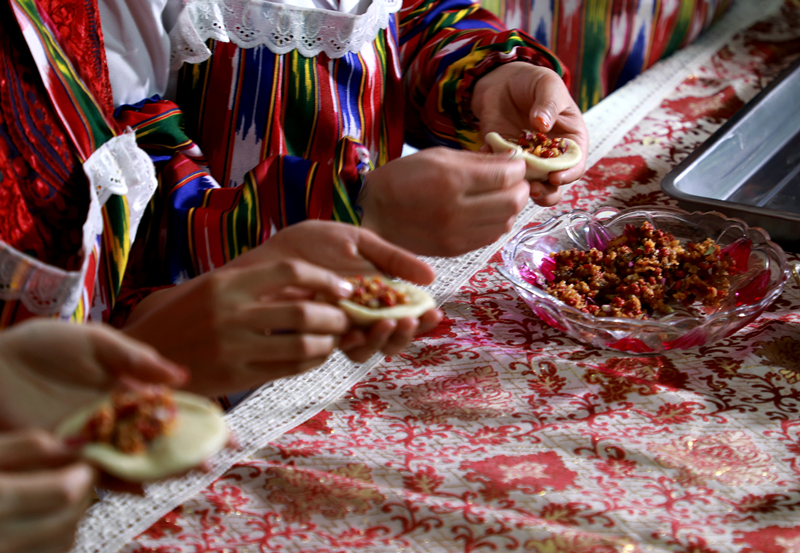Naan creating new breadwinners


"At the same time, the government will find new jobs for those who rent their lands out in the naan baking cooperatives. In that way, farmers not only receive rent money but also can get salaries from their jobs near their home."
Jin Yankun, deputy head of the county, said there are eight sizable cooperatives that employ more than 200 employees, with over 35 workers from impoverished families on the payroll. The lowest salary is 1,500 yuan a month, while the highest, for those with experience, can reach 6,000 yuan.
"Naan is a good choice of reserve food because it is nearly fully dehydrated during production and can be preserved as long as half a year in dry conditions," Omarjan said.
The food has made its way into history as part of decisive events.
"It is said that during the An Lushan Rebellion, a revolt by a border general which began in 755 in the Tang Dynasty (618-907), the emperor took naan with him during his escape from the capital Chang'an to Xianyang, Shaanxi province," he said.
Another legend from the same dynasty that spread in the region is that Xuanzang, the well-known Chinese monk, ate naan for energy on his journey to India to collect Buddhist texts.
Nowadays, naan is a frequent companion of nomads. The compact and virtually nonperishable food can accompany herdsmen over long stretches of time and grassland, Omarjan said.
Bakers and businessmen alike are hoping that the variety of naan made in Yuli gains in popularity and grabs market share on the internet.
"It's different from naan made elsewhere in Xinjiang," Omarjan said. "Its size is much smaller and its recipe calls for more lamb lard. It weighs just 55 grams and its diameter is a mere 7.5 centimeters, which means that it takes more time and energy to fill earthen ovens with batches of these smaller naan than bigger ones."
- Nobel laureate Paul Nurse inspires Chinese students in Beijing lecture
- Timothy Fok Tsun-ting awarded honorary doctorate by Renmin University of China
- US kidnapping of Venezuelan president: No high-minded pretense, even an excuse is a cumber!
- No more disinformation on Xinjiang, the law of the jungle fails in here
- CPC calls for reinforced anti-corruption efforts during 15th Five-Year Plan period
- Two ancient chariots unearthed outside Emperor Qinshihuang's Mausoleum





































